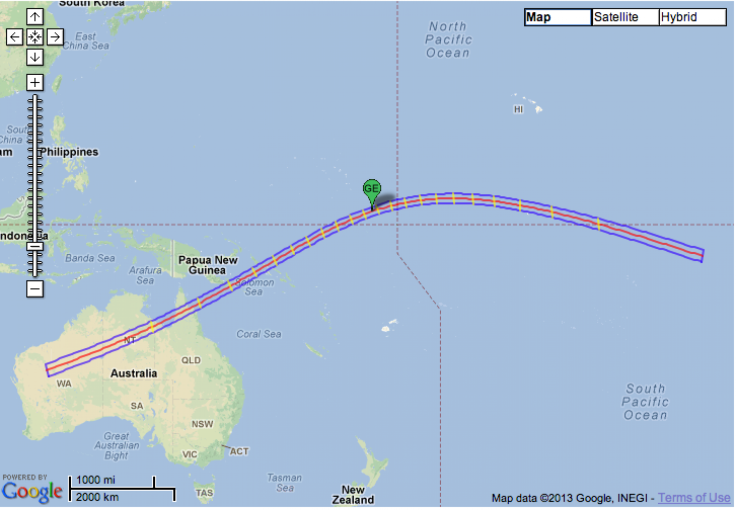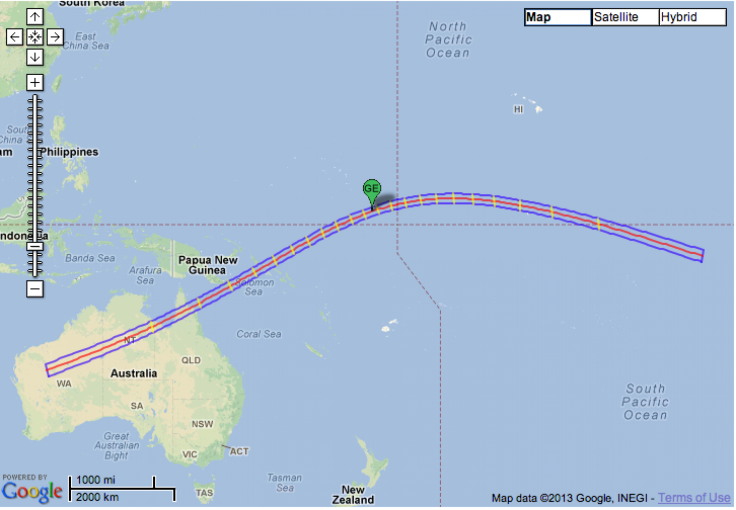Annular Eclipse 2013: 'Ring of Fire' Event To Dazzle Australia, Pacific Islands
The moon will pass between the Earth and the Sun later today, providing a partial solar eclipse for many, while a lucky few will witness an annular or “ring of fire” eclipse.
The eclipse will occur at about 5:30 p.m. Eastern time on Thursday or early morning on Friday if you’re west of the International Date Line. If you happen to be in the Pacific Ocean near the islands of French Polynesia or walking about in the Australian outback, you may get a glimpse of a ring-shaped eclipse, with the moon’s dark shadow surrounded by a fiery halo. The map below shows the path along which you’ll be able to see the annular eclipse:

Everyone else will see the moon take a big “bite” out of the sun, swallowing up around 95 percent of the solar disc. If you want to see the annular eclipse and you don’t happen to live in Australia, you may want to check out the Slooh Space Camera, which will be broadcasting the celestial event in real time.
If you go out to view the eclipse in person, take care to protect your eyes. Never view an eclipse with your naked eye or through unfiltered binoculars or telescopes! The lens of your eye will focus the sun’s rays on the back of your retina, just like a magnifying glass concentrates sunlight -- and you probably know what happens to ants when you train a magnifying glass on them.
Instead, view the eclipse either with special solar eclipse glasses, welder’s glass that are No. 14 or darker, or through a pinhole camera. You can make a pinhole camera with a long box, aluminum foil, a pin and white paper. San Francisco’s Exploratorium has detailed instructions on how to make a pinhole camera here.
So what makes this eclipse so special?
Normally, when the moon passes completely in front of the sun, it’s just large enough in the sky to totally block the sun from our view. But sometimes the moon’s orbit carries it too far out from Earth to completely cover up the solar disc. That’s the case with this eclipse, where the moon is firmly situated in front of the sun but not large enough (from our perspective) to cover it up completely.
Here’s a diagram to help you better understand the positioning involved:

Notice how, depending on your geographic position, you may end up seeing a partial solar eclipse (C) as opposed to a total (A) or annular (B) eclipse.
If you do happen to be in Australia, enjoy this rare event. North America got a front-row seat to an annular eclipse in May 2012 and won’t get another good view of a “ring of fire” eclipse until June 2021.
© Copyright IBTimes 2024. All rights reserved.











